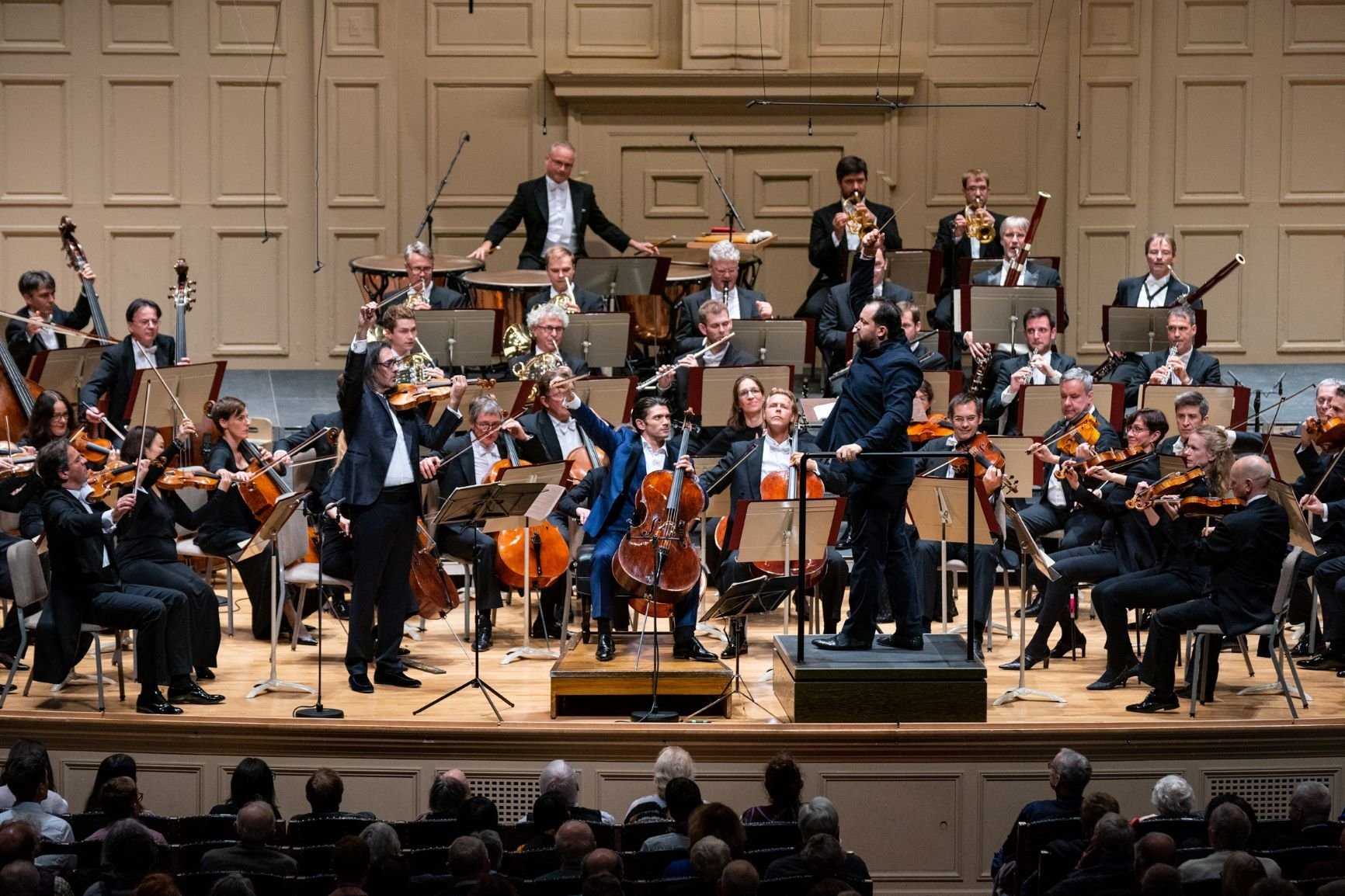Leipzig Week in Boston: Andris Nelsons Brings Leipzig and Boston Together

“What makes Andris Nelsons so special as a conductor?” I spoke to violinist Ana Luisa Wolkwein and tubist Ole Heiland, two young musicians who as part of their fellowship with the Mendelssohn Academy are on tour with the Leipzig Gewandhaus Orchestra in Boston this week.
“I really like that he lets the orchestra play first…He takes what the orchestra gives and then he makes something out of it. He lets you play,” Heiland said appreciatively. Wolkwein simply summarized, “He trusts the orchestra.”
I observed this trust firsthand on Sunday, October 27th, when I watched the Leipzig Gewandhaus Orchestra kick off their “Leipzig Week” in Boston Symphony Hall with outstanding performances of the Double Concerto for Violin and Cello by Brahms and Symphony No. 9 “The Great” in C Major by Schubert.
Throughout the performance, Andris Nelsons showcased the Leipzig Gewandhaus Orchestra’s strengths. Nelsons only recently assumed the position of Gewandhauskapellmeister of the Leipzig Gewandhaus Orchestra in February of 2018. However, from the very first, piercing note of the Brahms Double Concerto, one could easily see his confidence on the stage as well as his rapport with the musicians. The orchestra’s strength was the outstanding string section. The strings maintained an incredibly dark tone which managed somehow to always sound full but never too heavy, rich but never too indulgent, and deliberate but never didactic.
The soloists, violinist Leonidas Kavakos and cellist Gautier Capuçon, brought the crowd to their feet with their passionate performance of the piece. However, Kavakos and Capuçon at times seemed to disagree on how the piece should be interpreted. For example, in the dance-like third movement, Capuçon would take small liberties with time during his rendition of the theme, but then Kavakos would speed ahead through the parallel passage. In general, Capuçon tended to take his time, whereas Kavakos would urgently push forward. Both interpretations are equally valid, but I found myself wishing that they had compromised more during the rehearsal process. Despite this mismatch, though, each soloist was convincing in his own way. Their delightful encore, the 2nd movement of Ravel’s Sonata for Violin and Cello, was more cohesive, and it was the perfect light ending to the otherwise serious first half.
Following the intermission, Nelsons led the orchestra in Schubert’s Symphony No. 9, “The Great.” Here, without the need to follow two sometimes conflicting soloists, the orchestra was truly able to shine. The principal violinists, violist, and cellist were a joy not only to listen to but also to watch, as they seemed to be effortlessly communicating with each other through their facial expressions.
True to Heiland’s description, Nelsons at times seemed to not be doing much at all. He seemed at ease and willing to allow the orchestra to lead itself. With the freedom of not having to closely follow two soloists, the orchestra settled into its own tempo and was never in a hurry. The string section effortlessly achieved a depth of sound that I have rarely heard from the Boston Symphony Orchestra. Their resonant sound completely filled Symphony Hall, but they never overpowered the audience. In my interview with Wolkwein, she described a kind of reverence for the Boston Symphony Hall, despite it not being their own. “It’s really special to play in that hall because it’s a copy of the old Gewandhaus in Leipzig,” she told me.
When I asked Heiland whether Boston Symphony Orchestra musicians were different from Leipzig Gewandhaus Orchestra musicians, he replied that they were mostly the same, except the BSO musicians “may have some different thoughts of sound.” From the perspective of an audience member, I think that the Leipzig Gewandhaus Orchestra prioritizes the sound of the strings, while the Boston Symphony Orchestra emphasizes the sound of the brass. In both cases, Nelsons enables each orchestra to showcase its strengths, so in that way, although the same maestro conducts both ensembles, each sounds unique in its own way. Moreover, the two orchestra’s strengths must have complemented each other in their joint concerts (which I was unfortunately unable to attend). As the conductor of both ensembles, Nelsons carries on a long legacy of partnership between the two ensembles, which began in the year 1881, when the founder of the Boston Symphony Orchestra, Henry Lee Higginson, appointed Leipzig Conservatoire-trained Georg Henschel Chief Conductor of the BSO. Since then, many BSO conductors studied in Leipzig or were members of the Leipzig Gewandhaus Orchestra. Here’s hoping that Nelsons will bring back the Leipzig Gewandhaus Orchestra to Boston for years to come!
Allison Pao is a producer for WHRB Classical. You can hear her Monday evenings 7-10pm and Thursday mornings 5-7am.